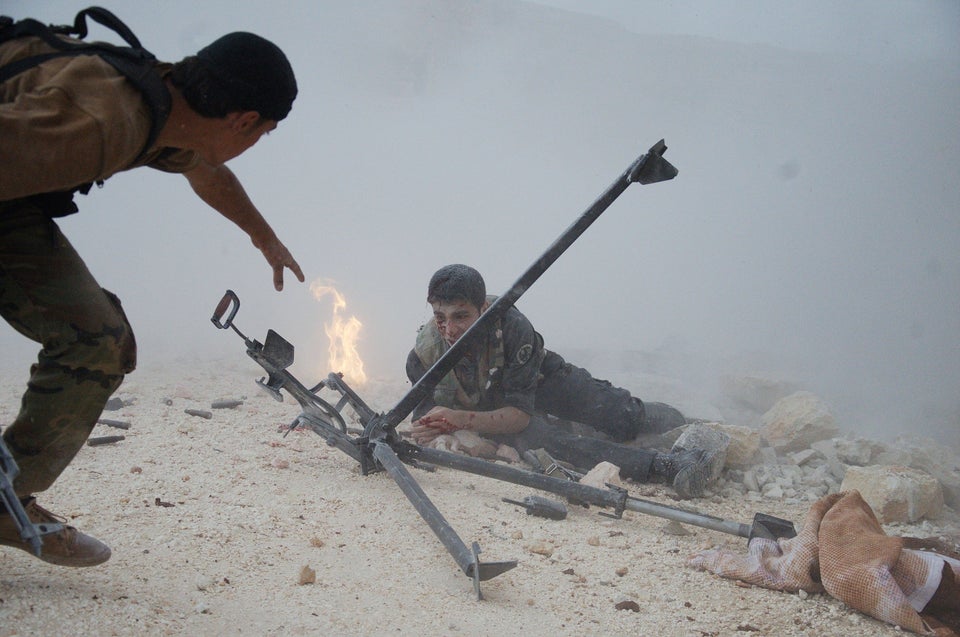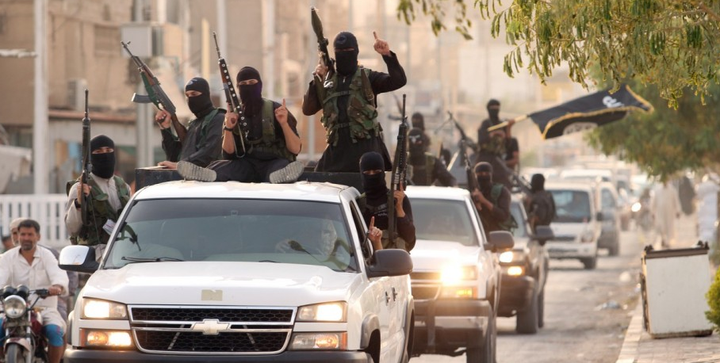
Every week, The WorldPost asks an expert to shed light on a topic driving headlines around the world. Today, we speak with Charlie Winter, senior researcher at the Quilliam Foundation, a counter-extremism think tank.
The Islamic State militant group produces a lot of propaganda, advertising the brutality of its punishments and promising an idyllic life in areas under its control with a steady stream of videos, photos and even music.
The Quilliam Foundation, a U.K.-based counter-extremism think tank, has been digging into the strategy behind the propaganda. This week, the foundation released a report analyzing 1,146 pieces of propaganda that were produced by the group between July 17 and Aug. 15, the Islamic month of Shawwal.
The WorldPost spoke to Charlie Winter, the author of the report and a senior researcher in transnational jihadism at the foundation, about what his findings reveal about the group.
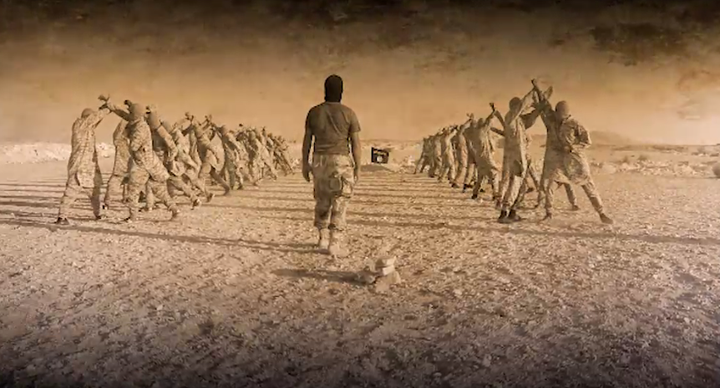
How does ISIS manage to produce such a large volume of high quality media?
It's very clear that a huge amount of resources are being expended in creating all of this output and making sure that it sends the right message, sticks to the brand and toes the line. That's evident of the fact that propaganda is very close to the heart of what the Islamic State is trying to do. Its information operations campaign is chief among its primary concerns. It needs to consolidate in the territories that it's controlling right now, and a key way to do that is by producing a huge amount of propaganda and limiting the information that people within the region have.
How many people do you think are engaged in this effort?
Other than a lot, I don't know. I think that's a question that's at the forefront of everyone's minds who's involved in researching the propaganda of the Islamic State. We know who the group's key leaders are and some of the key military figures, but there's a dearth of information available on open sources about who the mid-level guys are and how they engage with the broader operations.
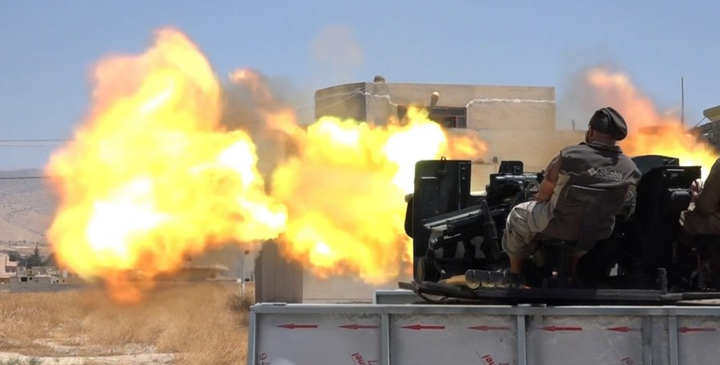
What mediums does ISIS mostly use for its propaganda?
Over the Internet, propaganda is disseminated mostly via Twitter. Videos will be uploaded onto other platforms and from there the link is circulated around the Internet.
It's really important that we realize that propaganda isn't just being consumed by people on the Internet, it's also being handed around -- literally by hand -- in the form of electronic magazines and newspapers to a civilian population living in any Islamic State-held territories. We only really hear about online propaganda because that's seen as the chief agent of recruitment and radicalization for foreign fighters, but their propaganda is very important offline in the territories they control.
“Propaganda is very close to the heart of what the Islamic State is trying to do.”
What types of content did you find to be most common?
Predominantly, it's photo essays. These are not just individual photos floating around that were taken spontaneously, but a set of between five and 15 photos that have been put together with a purpose in mind.
For example, on the first day of the survey for this report, the Islamic State's official media office in Raqqa province [in Syria] released a photo report called "Games on the day of Eid" in the city of Tabqa. This wasn't just a photo of some random game, taken haphazardly and then put onto the Internet as it was. It was a set of photos that had been taken through a post-production process: branded and then put through filters so they're given the right kind of light, to maximize their effectivity.
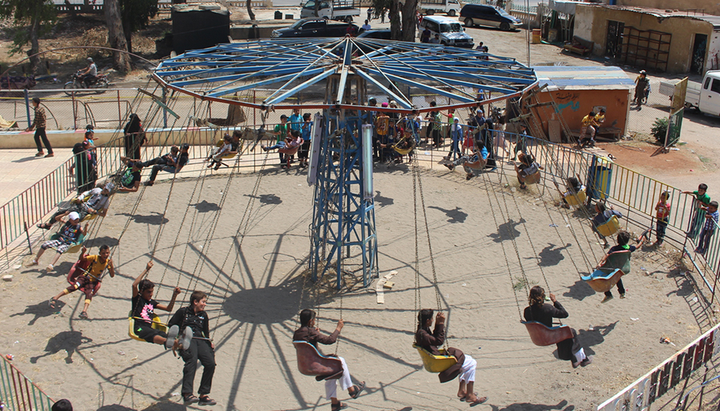
It was clearly something that had been choreographed, as there were a lot of people playing games. The propagandists are trying to convey a sense that it's only in the Islamic State's caliphate that Eid is so pristine and enjoyable and holy, as Islam is being implemented so thoroughly in this place. That's just one photo report out of 696 throughout the duration of the survey.
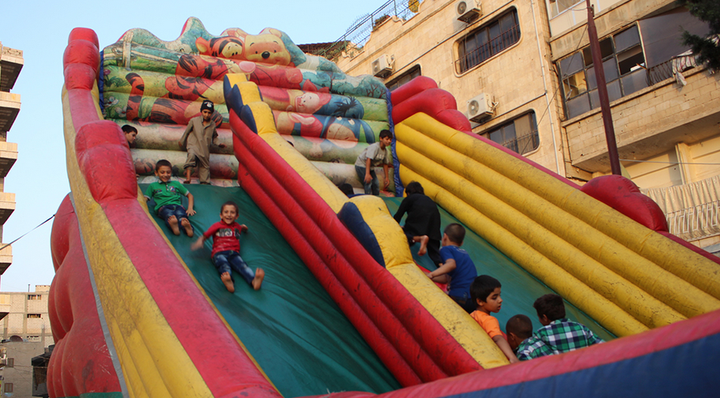
You mention in the report that some of ISIS' military propaganda appears to be staged. So, their propaganda about civilian life in the territories they control is tightly choreographed also?
I think that everything is very deliberate and everything is choreographed. While some of the photo reports might look very natural, there has still been a decision behind [them] to create propaganda about this event -- whether it's children having fun on a water slide, or a gay man being thrown off a tower and stoned to death. I think we have to recognize that none of this is really spontaneous.
Another example is the stream of economic activity propaganda -- stories about stonemasons' workshops or goldsmiths or markets. All of these are selling a very specific message that the lands that the Islamic State controls are lands of plenty. Of course, there isn't abundant food in these territories, as the propagandists would have us believe.
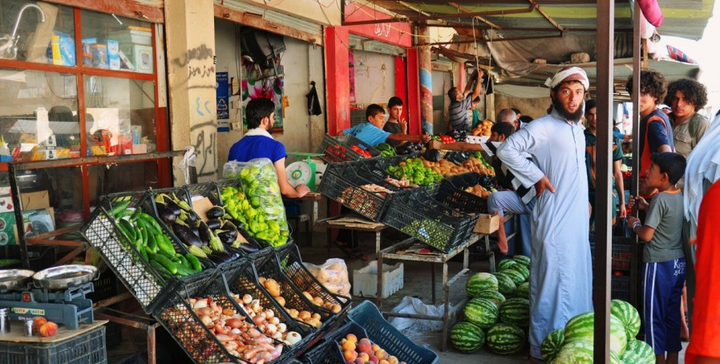
Who is this propaganda targeted at?
There are many different target audiences, including supporters and enemies of the group. Their targets include governments [from the U.S.-led coalition bombing IS], local governments, international publics, local publics, people in Syria and Iraq who are outside Islamic State-controlled territories and so on. There are also many different layers to the supporters they target -- whether it's potential supporters or potential recruits, disseminators or potential propagandists.
“Everything is very deliberate and everything is choreographed.”
What are the main aims of the propaganda?
To enemies, and especially to international publics, they want to draw attention to their cause, their military ventures and their general menace to the rest of the world. For recruiters, the propaganda acts as a sort of evidence base with which they can back up their claims. For people living in the region, they are attempting to serve as a reminder that life goes on -- while there are daily airstrikes and people getting their hands cut off and being stoned as punishment, it's all geared around the caliphate cause and does have a purpose.

Has their propaganda changed over time?
We have seen a shift from the international to the regional in the last few months. There's been a slight diversion from trying to provoke international outrage to deterring dissent and rebellion within the region with public executions of alleged spies or conspirators with IS adversaries. I think that's because IS' priority is now, above all else, to securitize and stabilize the area that they've created a level of hegemony over.
Over the course of the last year there's also been a very concerted effort to make everything look more professional, more uniform, more centralized, more effective. In the first few days of the study there was a new set of iconography and fonts rolled out by all of the propaganda offices of the Islamic State in sync with each other. The way that the propaganda is framed makes it look like [the Islamic State] has the same sort of institutions in place from West Africa to Afghanistan.

What would an effective counter-strategy to ISIS propaganda look like?
We need to recognize that there's no one counter-narrative that will undercut Islamic State's whole information operation. If we focus only on responding and reacting to individual cases of brutality or individual acts that Islamic State carries out we're structurally impairing ourselves from meaningful progress. We need to create our own alternative set of narratives and values and develop them into something that captures people's imagination and they want to believe in and promote.
For example, rather than responding to the Islamic State by saying that they kill more Muslims than anyone else, or aren't real Muslims, we could drive home what the international community is doing in response to [Syrian President] Bashar Assad or the refugee crisis. We need to focus on what our own image is as much as we need to focus on countering or responding to the Islamic State.
In my opinion the information war on the Islamic State is just as important -- if not more important -- than any physical war on the group. It's the information side of things and the politics of the region that's fueling Islamic State successes and driving people to join or leave the group.
This interview has been edited and condensed for clarity.
More from The WorldPost's weekly interview series:
- Russia Says Its Airstrikes In Syria Are Perfectly Legal. Are They?
- What Is The State Of Political Islam Today?
- Was The Libyan Intervention A Mistake?
- What Palestinian Membership In The ICC Really Means
- Inside The Islamic State's Apocalyptic Beliefs
Also on HuffPost:



